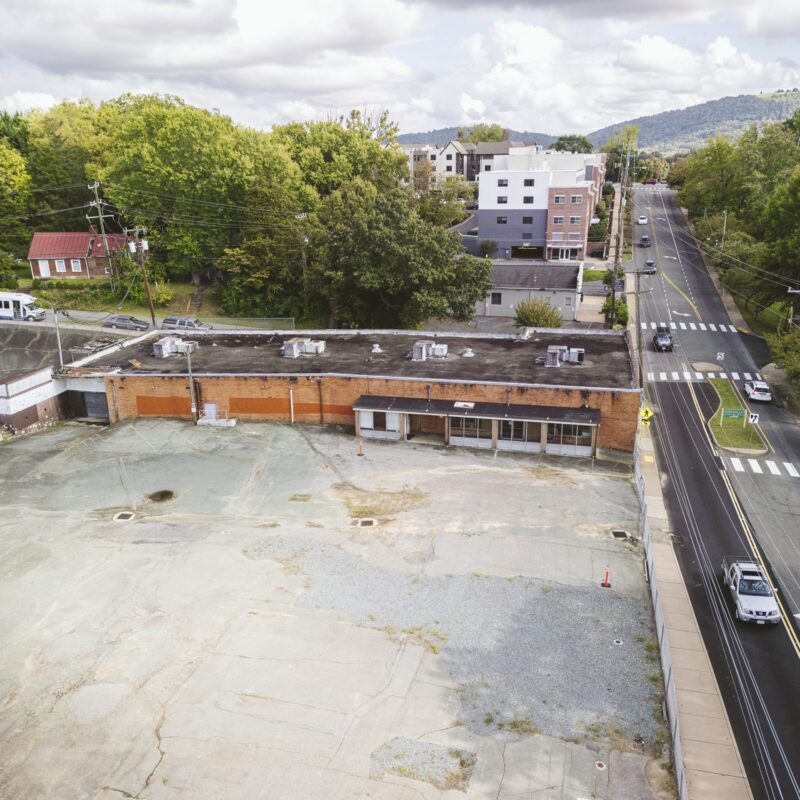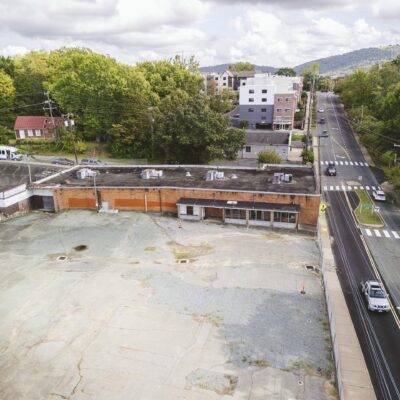
Each year, thousands of garden enthusiasts from all over the country come to Virginia for the annual Historic Garden Week—and for good reason. While every state in the Union enjoys spring in their own fashion, no one does it quite like Virginia.
Every April, the Garden Club of Virginia invites visitors to more than 250 of Virginia’s most beautiful gardens and private homes. Historic Garden Week in Virginia is the oldest and largest statewide event of its kind in the country and gives those lucky souls who come to our Commonwealth a week-long chance to see unforgettable gardens and stately homes while the peak colors of spring are in full bloom.
Over the last 83 years, the proceeds from the Historic Garden Week have gone to restoring or preserving many of Virginia’s most cherished historic landmarks, including Monticello, Montpelier and the University of Virginia to name a few.
The 225-page Historic Garden Week Guide Book provides details on every stop of the tour throughout the Commonwealth. We are highlighting the tours in Albemarle County, with descriptions taken from that Guide Book.
Keswick Area Tour
Tours of properties in the Keswick area will take place on Sunday, April 22 from noon to 5:00 p.m. and on Monday, April 23, from 10:00 a.m. to 5:00 p.m. The $40 ticket ($30 in advance), admits you to seven locations, including:
Chopping Bottom Farm
Named Metropolitan Home’s “House of the Year” in 2002, Chopping Bottom is a stylized farmhouse with multiple modules that mimic outbuildings. The minimalist look of the exterior continues inside the house where an all glass wall frames a stunning view of the Southwest Mountains. Maples line the drive. Chinese elms bracket the 70 ft. lap pool. Crabapples flank the house and cedars surround the courtyard. Cutting gardens provide a plentiful array of flowers. A large shade garden is sited alongside the stream that gives the property its name. House, grounds and studio will be open.
East Belmont Farm
East Belmont dates back to the early 1800s and is listed with the Virginia Landmark Register and the National Register of Historic Places. The main house sits on a knoll with lovely views in all directions. Old Kentucky Coffee trees and boxwoods surround it. A gated formal garden and a colorful cutting garden provide a graceful transition from house to barnyard.
Round Hill Farm
Overlooking the Southwest Mountains, the Williamsburg-inspired house is surrounded by 25 acres of gardens, native landscaping and horse paddocks. The house reflects the understated elegance of a Virginia-vernacular farmhouse. The owners commissioned a master landscape plan for the farm resulting in a variety of flowerbeds, vegetable and herb gardens, a fruit orchard and a koi pond. Tom’s Garden, a one-acre organic vegetable garden with raised beds and underground irrigation, benefits not only family and friends, but the Blue Ridge Area Food Bank as well.
Keswick Hall
The once country-house hotel features a golf course, designed by Arnold Palmer and included in the Audubon Cooperative Sanctuary Program. A half-acre vineyard is planted with Petit Manseng grapes. Beautifully tended kitchen gardens provide vegetables for Keswick Hall. History buffs and art enthusiasts will enjoy the estate’s extensive collection of art and antiques.
Keswick Hunt Club
The Keswick Hunt Club, founded in 1896, has hosted at least one annual horse show since 1904. The kennels are home to 70 American Foxhounds.
Grace Episcopal Church
First known as the Middle or Belvoir Church, and later as Walker’s Church, the original 1745 church was a square framed plastered and white washed wooden building. Foundation stones of the 1745 church and the old horse mounting stones are still visible. In 1845, William Strickland arrived to design a new building that burned in 1895. The current stone structure, built on the site of the 1855 church, was consecrated in 1896. The first Blessing of the Hounds service took place in 1929 and continues annually.
Oak Hill Farm
An alee of wonderful old cedars and tulip poplar trees leads to the main house. Once a simple 1950s house, it was transformed into a stately mansion that evokes the elegance and grandeur of a much older age. Enjoy the many vistas as you stroll the grounds. Sit in a rocking chair on the back patio and admire the Southwest Mountains, or linger in the garden rooms around the pool and rose gardens. And there’s so much more—each presenting a unique perspective, framed by the beautiful oak trees that give Oak Hill its name.
Morven Estate Gardens and House
Morven is a three-story brick manor house built in the late-Georgian/Federal style dating back to 1820. The land on which it sits was part of the original Carter family land grant and was known to Thomas Jefferson as “Indian Camp.” The 7,378-acre estate was given to the University of Virginia Foundation by the late John Kluge.
The original gardens were renovated in the 1930s and Mr. Kluge added more gardens. Look for unusual trees such as a pair of Osage orange trees, the state champion Chinese chestnut, and a lovely dove tree. Morven was a charter property open for the first Historic Garden Week in 1929 and is on the National Register of Historic Places and on the Virginia Landmarks Register.
This historic home and garden will be open on Saturday, April 21 from 10:00 a.m. to 5:00 p.m. Tickets are $15 in advance; $20 on day of tour. In case of rain and/or wet conditions, the tour will be canceled due to difficult parking conditions. Tickets are non-refundable, even if tour is canceled due to rain.
University of Virginia Pavilion Gardens & Activities
Open Tuesday, April 24, admission to all activities and historic buildings at U.Va. is free of charge.
Founded by Thomas Jefferson and established in 1819 as an “Academical Village,” the University of Virginia is the only American university designated as a World Heritage site. It is also a National Historic Landmark and on the National Register of Historic Places and the Virginia Landmarks Register.
The Garden Club of Virginia restored the University’s Pavilion Gardens and surrounding serpentine wall with proceeds from Historic Garden Week. Colonial Williamsburg landscape architects were hired to design the Colonial Revival gardens. Work in the gardens continues to be supported by the Garden Club.
Visitors are encouraged to explore all the gardens and are invited into five of Jefferson’s Pavilions, which still provide faculty with living and teaching quarters.
Also open will be The Mary and David Harrison Institute for American History, Literature and Culture and the Albert and Shirley Small Special Collections Library. Eric Groft, a 1985 graduate of the University, designed the landscape surrounding the Library.
At 2:00 p.m. enjoy a special presentation: “The Dell: A Working Landscape Restored,” talk by internationally renowned landscape architect, Warren T. Byrd Jr., CLA. This storm-water management project has transformed a neglected marsh into a beautifully designed and ecologically diverse 11-acre valley.
Carr’s Hill is listed on the National Register of Historic Places and has been home to eight university presidents and their families. Carr’s Hill was part of the late 1890s to 1900s building campaign that also included Cabell, Rouss, Cocke, and Garrett Halls and the Rotunda’s North Portico and interior. Master Gardener John Sauer, Carr’s Hill gardener, will give garden tours. All gardens and limited areas of the house are open.
Morea Gardens and Arboretum features large old trees and a beautifully landscaped botanical collection, started by the Albemarle Garden Club in 1965, surrounded by an historic Federal period house built by John Patten Emmet, one of the first professors chosen by Mr. Jefferson for the University. Morea is named after the mulberries Professor Emmet cultivated for experiments with silkworms. Only the gardens are open.
University of Virginia Art Museum will also be open from noon to 5:00 p.m. with no admission fee.
For more information about U.Va. events and activities, visit www.virginia.edu/gardenweek/
Monticello & Ash Lawn-Highland
Gardens were a passion of Jefferson’s, so it’s fitting that amateur gardeners can share that passion by visiting his home, Monticello, on Saturday, April 21, Monday, April 23 and Tuesday, April 24. There is an admission fee.
On Saturday, April 21 and Monday, April 23, both at 9:00 a.m., Thomas Jefferson’s Revolutionary Garden Tour will take place. This experiential tour of Jefferson’s vegetable and fruit garden includes a guided walk followed by a Meet the Gardener segment. Visitors will participate in gardening activities. Peter Hatch, director of gardens and grounds, will be on hand to answer questions. Mr. Hatch has been responsible for the maintenance, interpretation and restoration o the 2400-acre landscape at Monticello since 1977. $42 includes admission to the house. Reserved tickets are required.
Also on Monday, April 23, from 6:00 to 8:00 p.m., visitors can celebrate the launch of Peter Hatch’s, A Rich Spot of Earth: Thomas Jefferson’s Revolutionary Garden at Monticello, at an elegant garden party with the author as he discusses his book. The book illustrates the restoration of the garden to its original glory. $60 includes informal tours of Monticello and the gardens. Virginia wine and heavy hors d’oeuvres will be served. Reserved tickets required.
On Tuesday, April 24 at 10:00 a.m., enjoy Peter Hatch’s lecture about Jefferson as gardener, and the themes that defined his interest in horticulture and the gardens he created. Guided garden tour follows the lecture. This is a free event, but requires advanced registration.
Also on Tuesday at 2:00 p.m., enjoy an illustrated lecture by Peggy Cornett, Monticello’s curator of plants, at the Thomas Jefferson Center for Historic Plants. This will be followed by a tour of the gardens and nursery at Tufton Farm. This is also free and no registration is required.
For a complete listing of all garden week events and to purchase tickets online, please visit www.monticello.org/gardenweek.
Just up the road from Monticello is Ash Lawn-Highland, the home of James Monroe, fifth President of the United States. Monroe located his mountain estate near Monticello at the urging of his friend, Thomas Jefferson. During Historic Garden Week, costumed crafters will demonstrate various farm activities such as open hearth cooking, candle making, spinning and paper quilling. (434) 293-8000 or www.al-h.us.
Ticket Information
The best way to enjoy the tours is to have a copy of the Historic Garden Week guidebook as it contains details of what you’ll see at each property, when the properties are open, how to get tickets and prices for various age groups, and directions.
Tickets can be purchased at any of the homes and gardens open on the day of their tour. Advance tickets are available at numerous local outlets listed by tour, or online at www.vagardenweek.org. No refunds for advance ticket purchases. Properties may be visited in any order.
 Each year, thousands of garden enthusiasts from all over the country come to Virginia for the annual Historic Garden Week—and for good reason. While every state in the Union enjoys spring in their own fashion, no one does it quite like Virginia.
Each year, thousands of garden enthusiasts from all over the country come to Virginia for the annual Historic Garden Week—and for good reason. While every state in the Union enjoys spring in their own fashion, no one does it quite like Virginia.  Each year, thousands of garden enthusiasts from all over the country come to Virginia for the annual Historic Garden Week—and for good reason. While every state in the Union enjoys spring in their own fashion, no one does it quite like Virginia.
Each year, thousands of garden enthusiasts from all over the country come to Virginia for the annual Historic Garden Week—and for good reason. While every state in the Union enjoys spring in their own fashion, no one does it quite like Virginia. 


